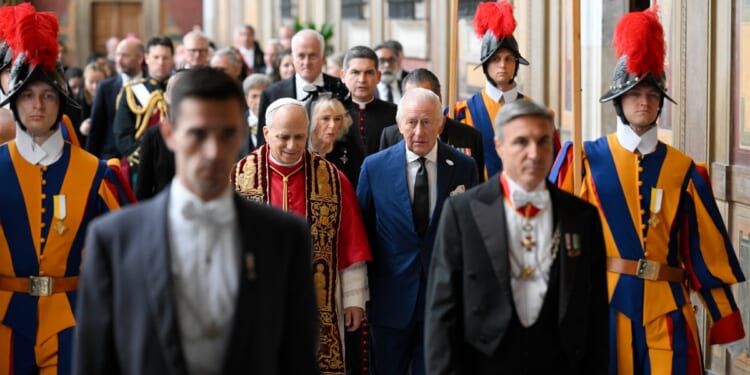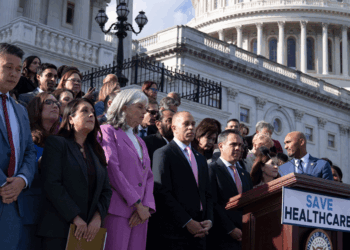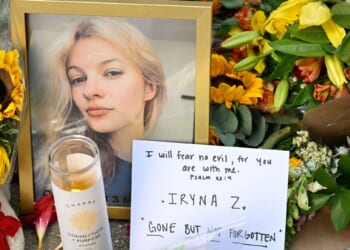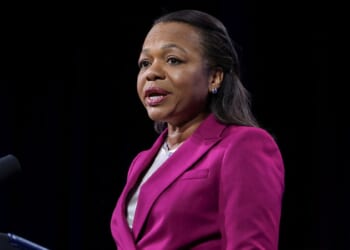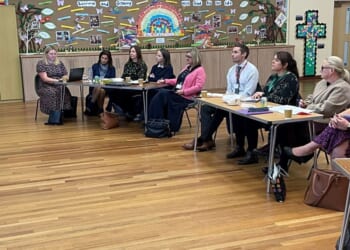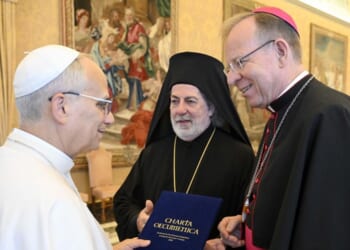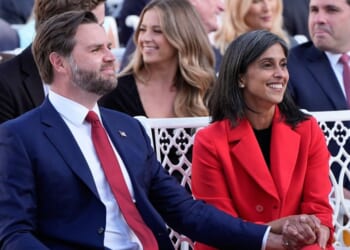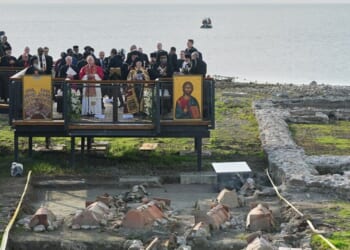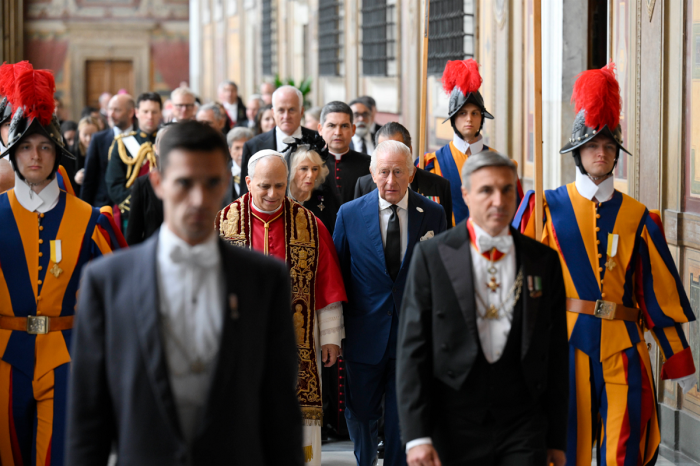
King Charles III participated in a public worship service with Pope Leo XIV at the Vatican on Thursday, marking the first time a reigning British monarch has attended such a service since the English Reformation nearly 500 years ago.
Seated on golden thrones beneath Michelangelo’s famous “Last Judgment” fresco in the Sistine Chapel, King Charles and Queen Camilla participated in an ecumenical service that featured both Roman Catholic and Anglican elements.
NOW – King Charles prays with Pope Leo XIV, the first time a Supreme Governor of the Church of England has prayed with the head of the Catholic Church since before the Reformation. pic.twitter.com/izKrBngeLp
— Disclose.tv (@disclosetv) October 23, 2025
Joining Pope Leo XIV in conducting the service was Archbishop of York Stephen Cottrell, who is the highest-ranking prelate in the Church of England until the Rt. Rev. Sarah Mullally is installed as the first female archbishop of Canterbury next year.
Some claimed that the service was a symbolic healing of the rift from the Reformation, which manifested politically in England when King Henry VIII broke with Rome in 1534 after the pope refused to annul one of his six marriages.
“There is a strong sense that this moment in the extraordinary setting of the Sistine Chapel offers a kind of healing of history,” the Rev. James Hawkey, who serves as canon theologian of Westminster Abbey, told Reuters.
Others were less optimistic that the Roman Catholic and Anglican traditions could be mended.
“For all the historical inflections, it would be a mistake to read too much into what this might mean to unity between these communions, given the vast doctrinal gulf that exists between the Catholic faith and Anglicanism today,” said Catholic journalist Raymond Arroyo.
The Rev. Kyle Paisley, a pastor in the Free Presbyterian Church in Northern Ireland, suggested that the king should abdicate for meeting with the pope, which he claimed violates his oath to uphold “the true profession of the Gospel and the Protestant Reformed religion.”
“The Protestant faith historically and theologically is a world apart from Catholicism,” Paisley told the BBC. “I don’t for the life of me see how he can engage in that kind of corporate worship.”
“It gives the impression that it’s not essentially different,” he added.
In 1903, King Edward VII met with Pope Leo XIII during a visit to Rome, though he did so as a private citizen and not in his official capacity as a British monarch, following pushback from his Cabinet. Before his visit, no reigning British monarch had been received by a pope since King Canute met with Pope John XIX in 1027, according to The New York Times.
The king’s meeting with the pope comes amid simmering tensions within the Anglican Communion, which was rocked earlier this month by the announcement that Mullally would become the first female archbishop of Canterbury.
Last week, the GAFCON movement of orthodox Anglicans announced its intention to renounce the spiritual leadership of the archbishop of Canterbury and launch the Global Anglican Communion founded on the Bible alone.
The impending installation of Mullally, who has openly affirmed abortion and homosexuality, prompted some in the Anglican Communion to claim that the Church of England has been given over to apostasy.
Jon Brown is a reporter for The Christian Post. Send news tips to jon.brown@christianpost.com

